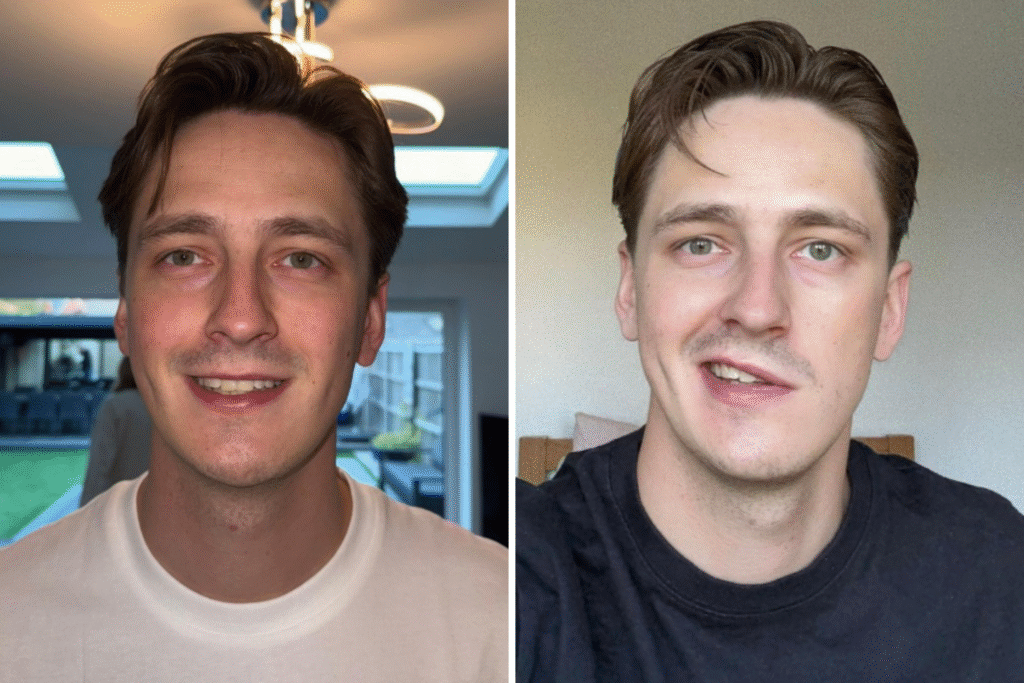A video of a man trying to smile and pull faces but with only one side of his face responding has gone viral on TikTok, gathering more than 5.3 million views.
Initially, Nathan Fisher, 27, noticed his smile was “slightly off.” He told Newsweek: “I thought I was having a stroke.”
But, since he was able to lift his arms with ease, he put it down to tiredness. However, the next day, the left side of his face was completely paralyzed.
Fisher posted a video online captioned: “POV [point of view] — You woke up with a half paralyzed face.” The footage shows his left eye rolling back when the right one closes.
“I could not close my eye properly so I called the emergency helpline,” said the police officer from Essex, England.
After CT and MRI scans, medics believed it was a transient ischemic attack (TIA), sometimes called a “ministroke.” It is different from major types of stroke. Blood flow to the brain is blocked for only a short time—usually no more than five minutes. But, a few weeks later in May, he was diagnosed with Bell’s palsy.
The American Brain Foundation says approximately 40,000 people in the United States are affected by Bell’s palsy each year. The most commonly affected age group is 15 to 45 years old.
Dr. Nicholas Dragolea, a London-based physician, told Newsweek: “There is no definite cause or triggers can be identified in the typical cases. There is a suggestion that previous infections with the herpes simplex or herpes zoster virus may be involved, but this has not been definitely proven.”
Dragolea, who works at My Longevity Centre in London, said: “Differentiating between a stroke and Bell’s palsy can be tricky and should only be done in a clinical setting by a trained health-care professional, as misdiagnosing a stroke can be fatal.
“The basic discriminator that we use in clinical practice is the forehead,” said Dragolea. “If the muscle weakness doesn’t affect the forehead and patients are still able to raise the eyebrow for example, then it is more likely to be a stroke or another cause of facial paralysis. A full neurological examination, as well as a thorough anamnesis [patient’s account of their medical history], remain important for an accurate diagnosis.”
Fisher took seven weeks off work and attended physiotherapy for one week, followed by massaging his face at home.
“I had one proper massage after the third week, which really helped, and that’s when I started to see improvements,” Fisher said. “I also concentrated on mirror feedback exercises and massages to release any tension.
“I had to relearn how to use the muscles in my face once the nerve recovered,” Fisher added.
Alongside this, he took B12 supplements to encourage nerve recovery. But this dramatic change in his appearance took its toll on his mental health.
“I felt insecure,” Fisher said. “It affected me mentally as my favorite thing about myself is my smile and then it was gone!
“Luckily, it was temporary, but it did affect me as I felt so awkward in social settings.
“I couldn’t eat or drink properly—I would dribble and struggle to get my mouth around a sandwich,” he added.
“My eye leaked, and I couldn’t close it for two weeks, so sleeping was a struggle,” Fisher said.
“My face is now back working! I still have some slight weakness, but I am relearning how to use all the muscles in my face.”
Read the full article here
